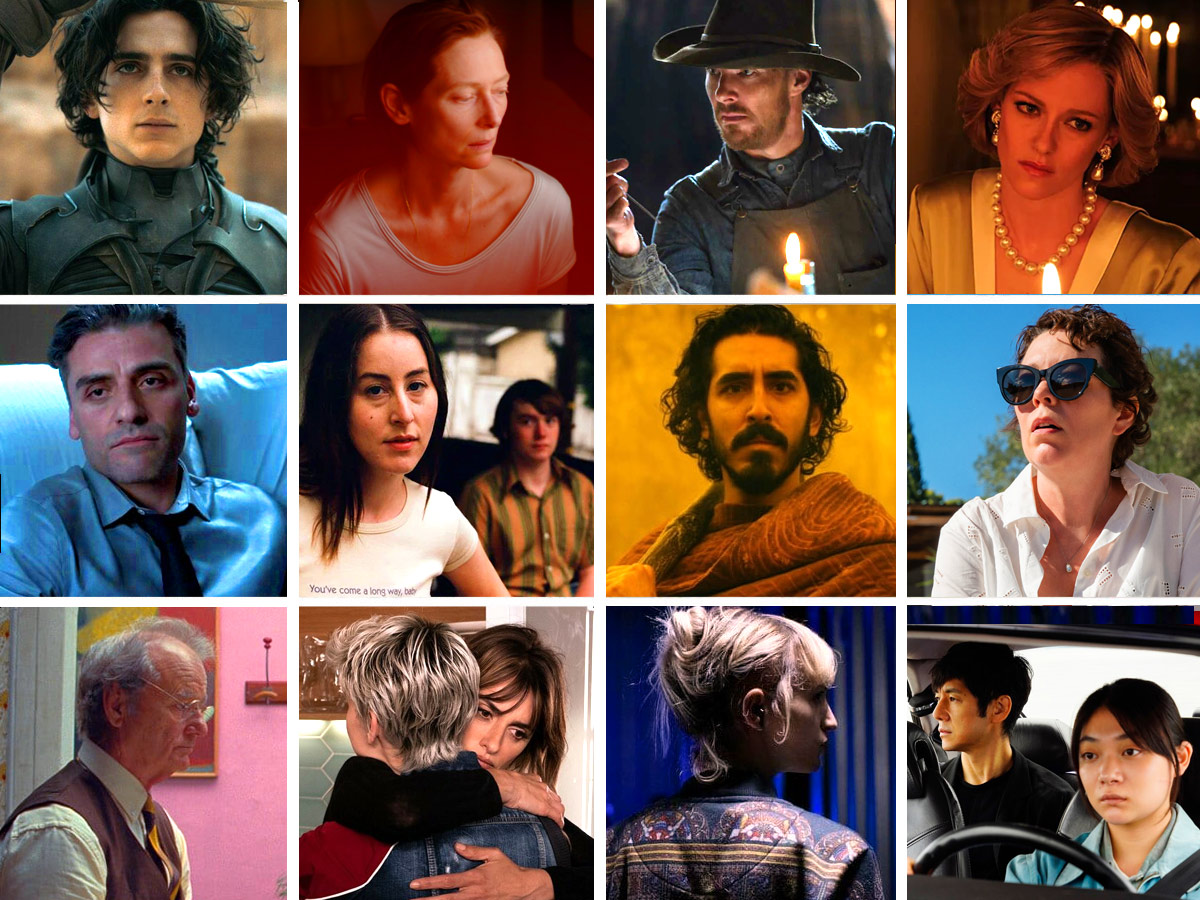15. “Petite Maman” (Céline Sciamma)
There is a delicate magic to the latest film from Céline Sciamma, who previously directed “Portrait of a Lady on Fire.” “Petite Maman,” a poignant festival favorite that runs under 72 minutes, finds the director in even more restrained mode, this time ruminating on family, self, and the connection we have with loved ones through the quaint friendship of two girls. Nelly (Joséphine Sanz) returns to her mother’s childhood home after her grandmother passed away, as the home is being packed up. While wandering in the woods, she meets a young girl who looks very similar to her named Marion (Gabrielle Sanz), and the two instantly bond. Sciamma’s story then toys with sci-fi poetry in the most gentle way possible, witnessing their quiet self-discovery with pacing that matches the blow of the wind in the trees surrounding Nelly’s grandma’s house. – Nick Allen (Our review of “Petite Maman”)
14. “Annette” (Leos Carax)
It was the year of Sparks! Even though they’ve been writing and recording catchy songs for 50 years, musical brothers Russell and Ron Mael finally got their due visibility as a band thanks to Edgar Wright and his career-spanning, cult-initiating documentary “The Sparks Brothers,” released this past summer. It was the year of Sparks! The Maels were also seen in their original feature musical “Annette,” directed by arthouse bad boy Leos Carax, and it marked their big cinematic breakthrough after earlier projects with Jacques Tati and Tim Burton fell apart. It was the year of Sparks! But the Maels only had cameos, actually, and the movie was more about its shining bright movie stars: Adam Driver, playing a volatile comedian; Marion Cotillard, playing a winsome opera singer; and their on-screen love child Annette, played by a puppet. It was the year of Sparks! The Hollywood saga of “Annette” did not resoundingly charm the world like its titular toddler, but it did ingratiate unsuspecting Amazon subscribers to the duo’s raucous imagination and wondrous sense of sincere absurdity, along with their taste for making a verse and chorus one in the same. It was the year of Sparks! It was the year of Sparks! It was the year of Sparks! – Nick Allen (Our review of “Annette”)
13. “Shiva Baby” (Emma Seligman)
With its biting wit, nausea-inducing levels of awkwardness, and an all-too-relatable lead in Rachel Sennott, Emma Seligman’s feature directorial debut “Shiva Baby” is a simultaneously horrifying and mesmerizing exercise in the pains of social interaction. The film follows a few hours in the life of aimless twenty-something college student Danielle (Sennott) as she attends a Shiva with her parents—only to find out (to her horror) that her sugar daddy is in attendance, alongside his wife and newborn baby. Between dodging nagging relatives, her troublemaking ex-girlfriend, and her increasingly suspicious sugar daddy, “Shiva Baby” mixes the mind-numbing banality of family functions with a frightening dedication to making the viewer as uncomfortable as physically possible. Seligman’s razor-sharp screenplay, brought to life by key supporting performances from Dianna Agron and Molly Gordon, makes for a hypnotic and unmissable watch. – Lauren Coates (Our review of “Shiva Baby”)
12. “The Worst Person in the World” (Joachim Trier)
Joachim Trier’s latest masterpiece navigates the tricky landscape of the romantic drama in a way that breathes new life into it. The title refers more to what Julie (a stunning Renata Reinsve, deserving winner for Best Actress at Cannes 2021) may think of herself than the actual truth. It’s about those turning points in life when mistakes in relationships can end up being exactly the right thing to do. The film’s sharp dialogue, focus on connections, and rich characters sometimes recall Richard Linklater’s “Before” movies, but Trier also allows for visual whimsy in a film that’s consistently unpredictable and engrossing. Reinsve compels as one of the most fully-realized characters in any film in 2021 as she finds ways to make Julie totally relatable and yet uniquely drawn at the same time. It’s a star-making performance in a film that reminds viewers that stories of real human failures and successes can make for riveting storytelling. – Brian Tallerico (Our review of “The Worst Person in the World”)
11. “Parallel Mothers” (Pedro Almodóvar)
Pedro Almodóvar’s “Parallel Mothers” arrives on the wings of a melodramatic gasp, yet returns the Spanish auteur to his early political roots. This unpredictable film has all of Almodóvar’s signature elements: pop art colors, a simmering queer romance, and a soulfulness concerning loss that never becomes treacly. It follows two mothers to be: a well-regarded photographer (Penélope Cruz) shaped by collective grief instigated by the Spanish Civil War, and an apolitical teen (Milena Smit) with an estranged father and an actress mother still looking for her big break. A mix-up at the hospital binds the two women, but the unraveling of the truth nearly tears them apart. While “Parallel Mothers” flourishes through a series of big reveals, putting the pearls hanging around your neck under a stress test, it also unexpectedly, magically, transforms into a wholly different film. “Parallel Mothers” concludes on a political statement so declarative, it leads to one of the great final shots of Almodóvar’s career. – Robert Daniels (Our review of “Parallel Mothers”)





